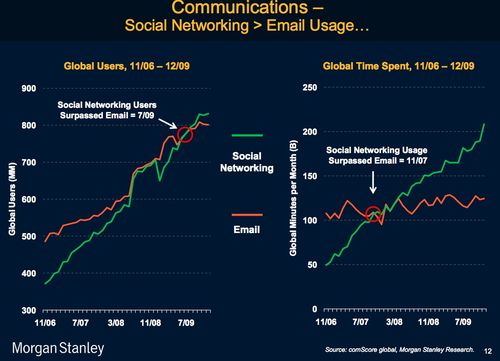A Look Back At Summize
In July 2008, Twitter acquired a company called Summize. The stated reason was to bring search into Twitter. And that was the main reason that Twitter did the deal.
But Twitter also got a very strong engineering team in that acquisition. I remember asking Ev and Jack at the time "how are we going to integrate the engineering team?" and Jack replying "we aren't going to integrate them, they are going to integrate us".
At that time Twitter was experiencing very difficult scaling problems. The service was down a lot and was slow when it was up. The "fail whale" was the symbol of Twitter and it was a huge problem.
While Twitter hasn't slayed that beast entirely, it has come a very long way in less than two years. In the crudest measure of its traffic (monthly UVs to Twitter.com), Twitter has grown 50x in that time and has increased its reliability and scalability dramatically.
And the Summize engineering team had a lot to do with that. Greg Pass who was Summize's co-founder and VP Engineering became Twitter's engineering leader in the summer of 2008 and has built the team from roughly a dozen to somewhere around ten times that number. In my view, Greg is one of the unsung heros of the Twitter success story. He brought a calm, steady hand to a ship that was caught in a storm. He got it going in the right direction and headed for calmer waters.
I remember asking Greg during the Summize due diligence what his plan was for stabilizing Twitter. He answered that there was no magic bullet. He said they weren't going to do one big thing, they were going to do lots of small things. The first thing they did was instrument the hell out of the system, they started measuring everything and finding the bottlenecks, and then they started knocking them down one by one.
Twitter has an entirely new architecture now. But they did not rebuild Twitter, they just replaced one thing at at time and evolved it. They went from a monolithic beast where everything was connected to a distributed set of services that work together but are separate from each other. And that is Greg's legacy.
I'm telling this story today because Twitter has announced that Mike Abbott will be joining the Company as VP Engineering. And Greg Pass will become Twitter's first CTO. As Greg passes the engineering baton to Mike, I want to make sure that we recognize the extraordinary contribution that Greg and the entire Summize team has made to Twitter.
There is a saying that success has a thousand fathers. That is true. But only a few of those fathers are well known in most successes and many of the big contributors are unsung heros. That's how it is with Greg and the Summize team and so I am singing their praises today. Well done.




